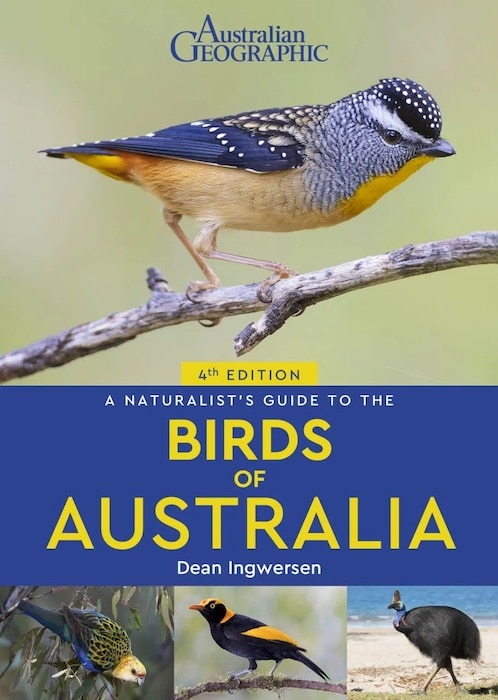| By Dean Ingwersen | John Beaufoy Publishing | 2024 | Edition 4 | Paperback | 176 pages, 310 colour photos, 2 colour maps| ISBN: 9781913679651 |

The Publisher’s View:
A Naturalist’s Guide to the Birds of Australia is an easy-to-use introductory photographic guide to 280 bird species seen in Australia, including the most commonly seen and rare endemic species. High-quality photographs from the author and other top Australian nature photographers are accompanied by detailed species descriptions, which include nomenclature, size, distribution, habits and habitat. The user-friendly introduction covers climate, vegetation, biogeography and the key sites for viewing the listed species. Also included is an all-important checklist of all of the birds of Australia encompassing, for each species, its common and scientific name, and local and IUCN status. In this fourth edition, many photos have been updated and species-level taxonomy follows IOC version 13.1 (Gill et al. 2023), while common names follow the nomenclature of The BirdLife Australia Working List of Australian Birds version 3.0 (BirdLife Australia, 2019).
The Author: Dean Ingwersen is an avian ecologist with over 20 years of experience and has worked on a range of high-profile threatened bird recovery programmes in Australia. He is an award-winning photographer, contributes articles to bird publications regularly and has conducted numerous bird identification and photography workshops over the years.
Fatbirder View:
I am a fan of John Beaufoy publications, there are many good guides. Having said that, the guides are not great for specialists, and designed for anyone with a general interest in the natural world.
For example, I know little about Lepidoptera but and interested and like to know what I am seeing… so both the NZ and Hong Kong books are ones I would pack if I was visiting there. The Australia bird guide would be surplus to requirements as there are five excellent bird fieldguides with bigger drawings pointing out ID features and much more in-depth coverage of the birds.
On the other hand, If I was a non-birder, visiting family down-under it would be a great space saver to give me a good chance of identifying most of the birds one is likely to encounter without setting out to see them.
The Butterfly and moth book may well find its way to my sister in NZ. She has many other interests, but that volume is perfect for ID the moths turning up on her porch etc.
In short, great little guides for those with general interests in wildlife and the nature around them.
Fatbirder
